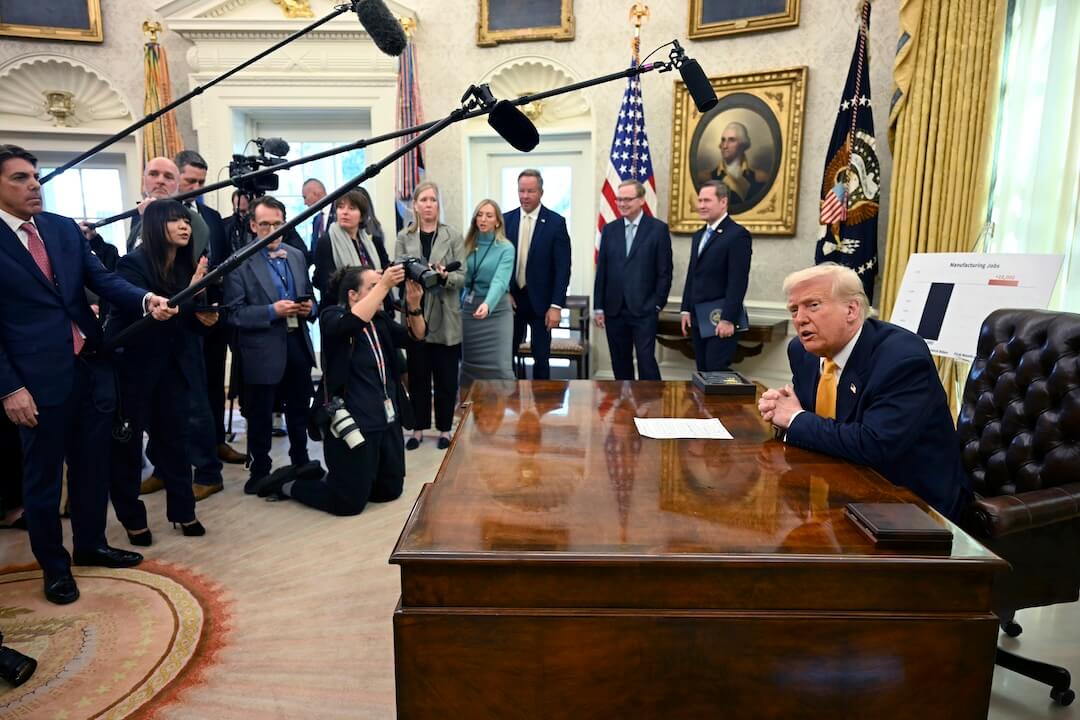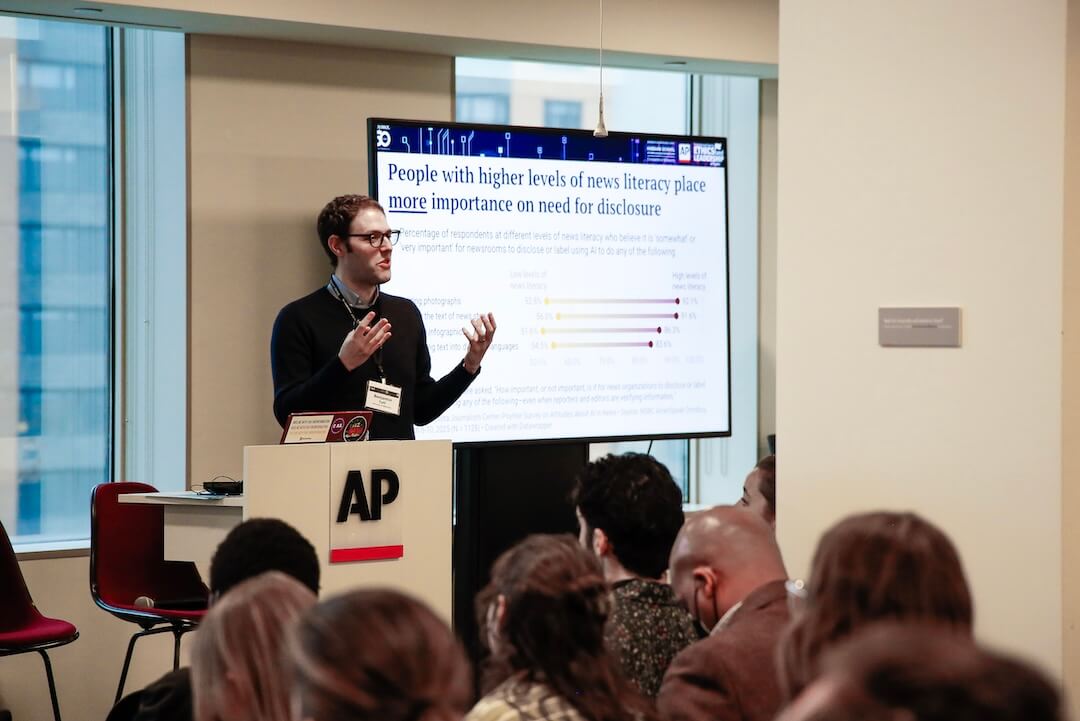 Covering COVID-19 is a daily Poynter briefing about journalism and coronavirus, written by senior faculty Al Tompkins. Sign up here to have it delivered to your inbox every weekday morning.
Covering COVID-19 is a daily Poynter briefing about journalism and coronavirus, written by senior faculty Al Tompkins. Sign up here to have it delivered to your inbox every weekday morning.
Anti-vaxxers have been quiet lately, VICE News pointed out, as everyone, it seems, hopes for a coronavirus vaccine.
If a significant number of people refuse to take a vaccine when it does become available, it could compromise the whole effort. And there is reason to believe that some will refuse because they feel that the COVID-19 outbreak is some sort of conspiracy.
VICE summarized the problem this way:
Experts have expressed fears that misinformation and scaremongering from the anti-vaxxer community might make it difficult for us to eradicate COVID-19 completely once a vaccine becomes available. Conspiracy theories abound when it comes to vaccination, particularly in certain regions where legal battles continue to rage. “If you’re still thinking it’s coincidental that a pandemic erupted in the midst of a state by state sweep to remove your right to refuse vaccination, it’s time to get your head out of the sand,” reads one post on the vaccine-skeptic Facebook group Oregonians for Healthcare Choice. In fact, according to recent research by Emerson Polling, more than 10% of Americans wouldn’t get a coronavirus vaccine, which is frightening considering the rate at which it spreads.
It might be useful for journalists to get into the mindset of anti-vaxxers to understand even the most “out-there” theories. Mother Jones has a collection of some of them, not to repeat and regenerate, but to understand so you can navigate how suspicions grow in a pandemic.
And then there are the anti-vaxxer politicians who complicate the public’s understanding of what to believe. Vermont’s lieutenant governor — who is running for governor — is under attack for what his opponents call his anti-vaccine positions.
Last year, the World Health Organization labeled what it called “vaccine hesitancy” one of the top 10 threats to global health, citing a 30% increase in measles cases worldwide. Vaccine skepticism is often tied to populist political movements on the right and the left. It’s part of a bigger surge of anti-establishment anger around the world — including in the U.S., where less than half the population gets vaccinated against the seasonal flu, which has killed tens of thousands in the past year alone.
President Donald Trump was once a vaccine skeptic. In 2015 he said he didn’t like the idea of “injecting bad stuff into your body.” But he changed his tune in April 2019 during a measles outbreak when he told parents to take their kids to “get their shots.”
Politicians’ views are important because in recent national surveys, close to a fourth of Americans said they have questions about vaccine safety. Gallup found in a 2019 survey:
Americans are even more skeptical than the global average, with 72% strongly or somewhat agreeing that vaccines are safe. 28% of Americans do not agree that vaccines are safe — including 17% who say, “neither agree nor disagree,” don’t know or refuse to answer, and 11% who strongly or somewhat disagree.
By January of this year, as the coronavirus was moving through Asia, Gallup found a drop in the percentage of U.S. parents who see vaccinations as “very important or important.” Gallup reported 84% of American parents rated vaccinations as important or very important, which is down from 94% a decade earlier.
The most recent survey found that the older you are and the more education you have obtained, the more you value vaccinations. Men value them less than women and those who identify themselves as Democrats were more likely to value vaccinations than Republican respondents.
The International Fact-Checking Network has cataloged more than 1,000 COVID-19 claims since January to help you verify rumors and claims that spring up around the globe.
What journalists need to know about the race to create a vaccine
My Poynter colleagues over at PolitiFact built a primer on what you need to know about a COVID-19 vaccine, including why it often takes a decade or longer to make a vaccine widely available, why a COVID-19 vaccine could arrive faster than usual but still take a year or longer to develop, and whether there is anything unusually difficult about this vaccine.
This is background that will help you ask more informed questions of health experts and politicians who make vaccine claims.
If we need health care workers right now, why are hospitals laying off staff?
Hospitals have cut back or canceled many non-emergency surgeries, and that has hit the hospitals hard financially. In response, they have laid off nurses and doctors at the same time they are experiencing shortages of both.
Part of the problem is that many states that have not (yet) had huge outbreaks of COVID-19 cases, but have ordered hospitals not to perform elective surgeries. The toll is extensive. A New Hampshire hospital chain furloughed 600 workers. It’s the same story in Philadelphia. A lot of the furloughs involve non-emergency patient care workers and office staff.
The Becker Hospital Review newsletter, which is aimed at hospital CFOs, listed other examples around the country, including these big and small hospitals:
- Livonia, Michigan-based Trinity Health plans to furlough 2,500 employees. The system made the decision to help offset the financial hit from COVID-19. Most of the affected employees are in nonclinical roles.
- Boston Medical Center is furloughing 700 staff members, or 10% of its workforce, due to financial losses from the COVID-19 pandemic. Kate Walsh, CEO of Boston Medical Center, told The (Boston) Globe that the hospital has lost about $5 million in revenue per week, and that the furloughs will help save the system about $1 million per week.
- Citing a revenue hit from the COVID-19 pandemic, Cincinnati-based Bon Secours Mercy Health will furlough 700 employees and freeze wages of all nonclinical personnel. The furloughs are expected to begin next week and last 30 to 90 days, depending on how long the pandemic lasts, according to Bon Secours Mercy Health CEO John Starcher. Bon Secours Mercy Health estimates it will see an operating loss of at least $100 million per month while the pandemic lasts.
- Citing a severe disruption in services due to the COVID-19 pandemic, Duluth, Minnesota-based Essentia Health has placed about 500 nonclinical staff on administrative leave.
- Hartford-based Connecticut Children’s Medical Center is furloughing 400 employees across its system due to the expected financial hit from COVID-19, according to The Hartford Courant. The system said its patient volume has been cut in half due to halting elective procedures. Furloughed employees are mainly nonclinical workers, and are expected to return to work in early June, or when elective procedures can resume.
- Clay County Medical Center, a 25-bed hospital in Clay Center, Kansas, has furloughed 25% of its staff in response to the COVID-19 pandemic, according to The Clay Center Dispatch. It has about 300 employees, according to its website.
Conversely, Veterans Affairs hospitals are asking for retired health care providers to come back to help.
[the_ad id=”667872″]
How COVID-19 is hitting farmers
Corn prices fell to their lowest level in four years, just when farmers were hoping that the long-awaited trade agreement with China would make their income a little more stable.
The problem now, with so many of us staying home, is there is less demand for fuel and that means less ethanol consumption.
MarketWatch reported that the lower demand comes at exactly the same time that farmers are planting even more corn than last year.
U.S. ethanol use may see an estimated total decline of 741 million gallons in the March through May period, which would result in a reduction of 256 million bushels in corn ethanol use, according to a report from economists at the University of Illinois posted on the university’s daily farmdoc website.
Adding to the concerns of excess supplies, the U.S. Department of Agriculture estimates total U.S. corn planted acreage at 97 million acres in 2020, up 8% from last year.
A great checklist for photojournalists to stay safe
This is from The Everyday Projects, a nonprofit photography organization that aims to challenge stereotypes. The advice is by a photojournalist, for photojournalists, and it is solid common-sense guidance for covering COVID-19.
Visualizing 6 feet for social distancing
The more we normalize the notion that we should stay 6 feet away from each other, the more we might just do it.
I have seen some especially clever graphics that show Wisconsinites that 6 feet is the length of one dairy cow or two calves. In Florida, it is the length of one alligator.
Here is a website that helps you put it in perspective in a staggering number of ways.
For example:
- It is about as long as a full-size bed.
- It is one-one hundredth as tall as the Seattle Space Needle. (OK, that might not help.)
You could ask the public to help you visualize 6 feet. The key here is to have a little fun while teaching, reminding the audience about the guidance and making the conversation interactive. Give extra credit to contributions that the public hand-illustrates.
One South Carolina sheriff promoted the phrase “6 feet apart is better than 6 feet under.”
[the_ad id=”667878″]
How we work
We are offering a little feline love today after Sunday’s news that a human gave a tiger the coronavirus. It turns out that researchers believe that cats and ferrets are more likely to catch the virus from humans than dogs or ducks. For the record, researchers are saying the chances of you catching the virus from your pet are slim.
 We’ll be back tomorrow with a new edition of Covering COVID-19. Sign up here to get it delivered right to your inbox.
We’ll be back tomorrow with a new edition of Covering COVID-19. Sign up here to get it delivered right to your inbox.
Al Tompkins is senior faculty at Poynter. He can be reached at atompkins@poynter.org or on Twitter, @atompkins.







